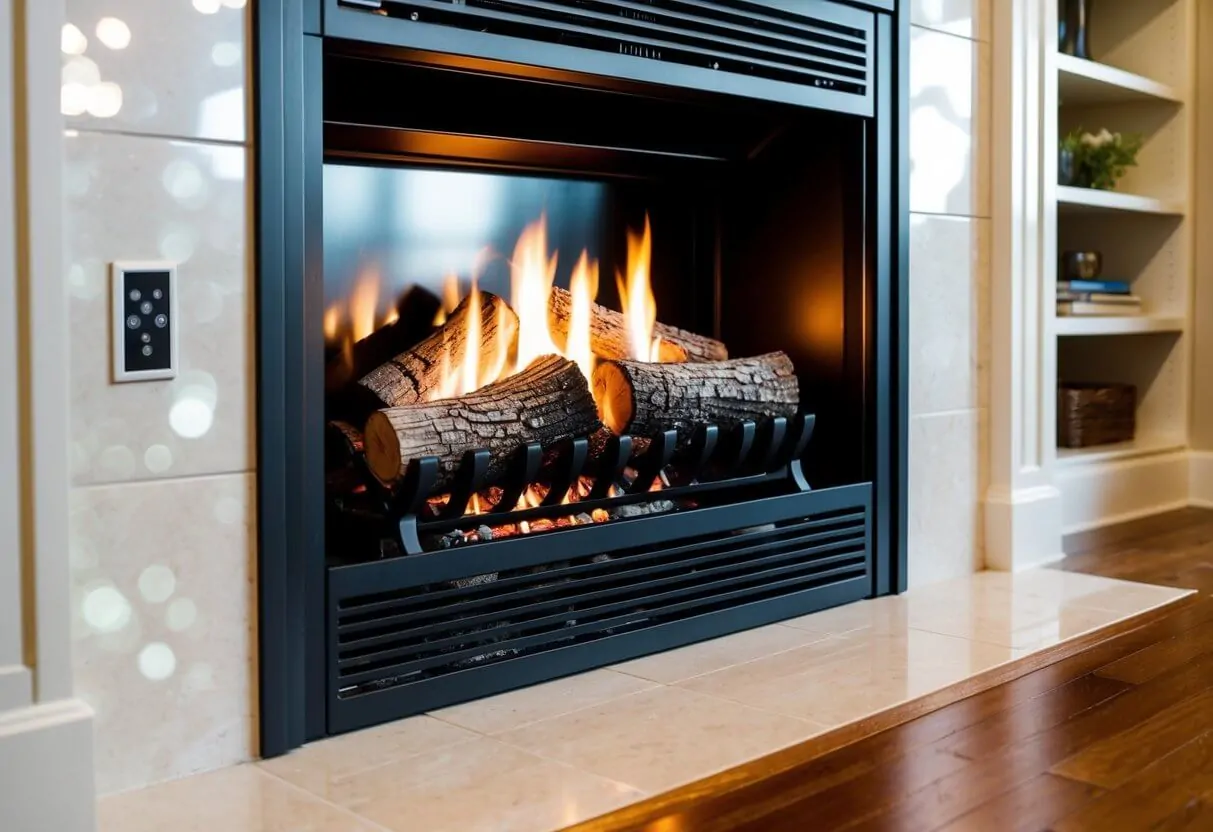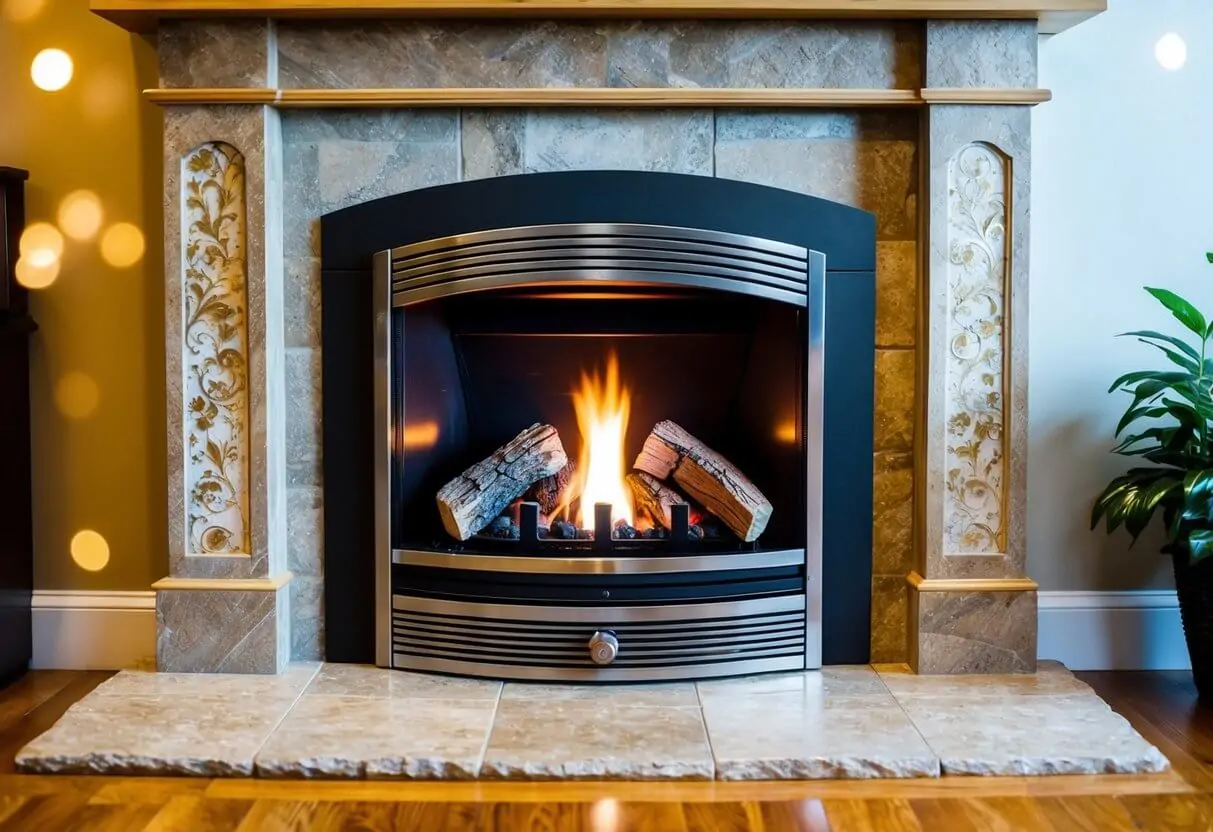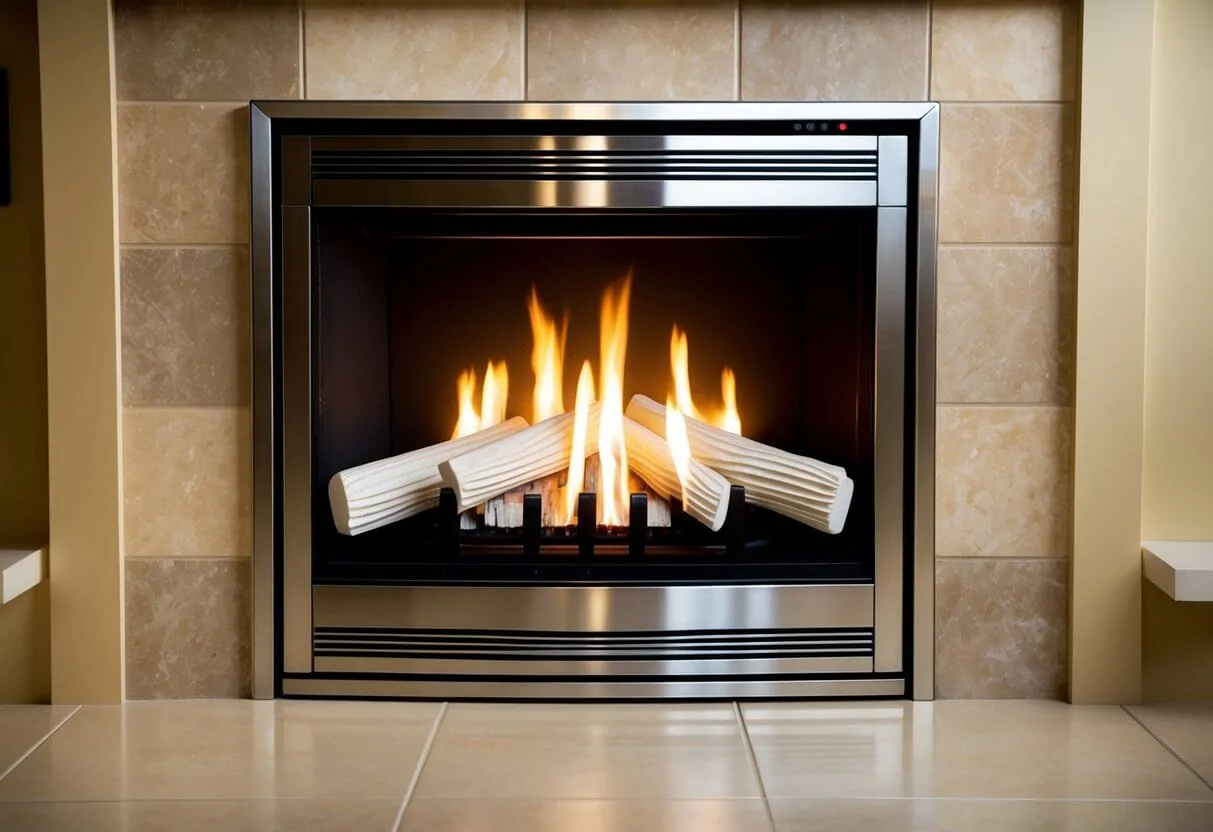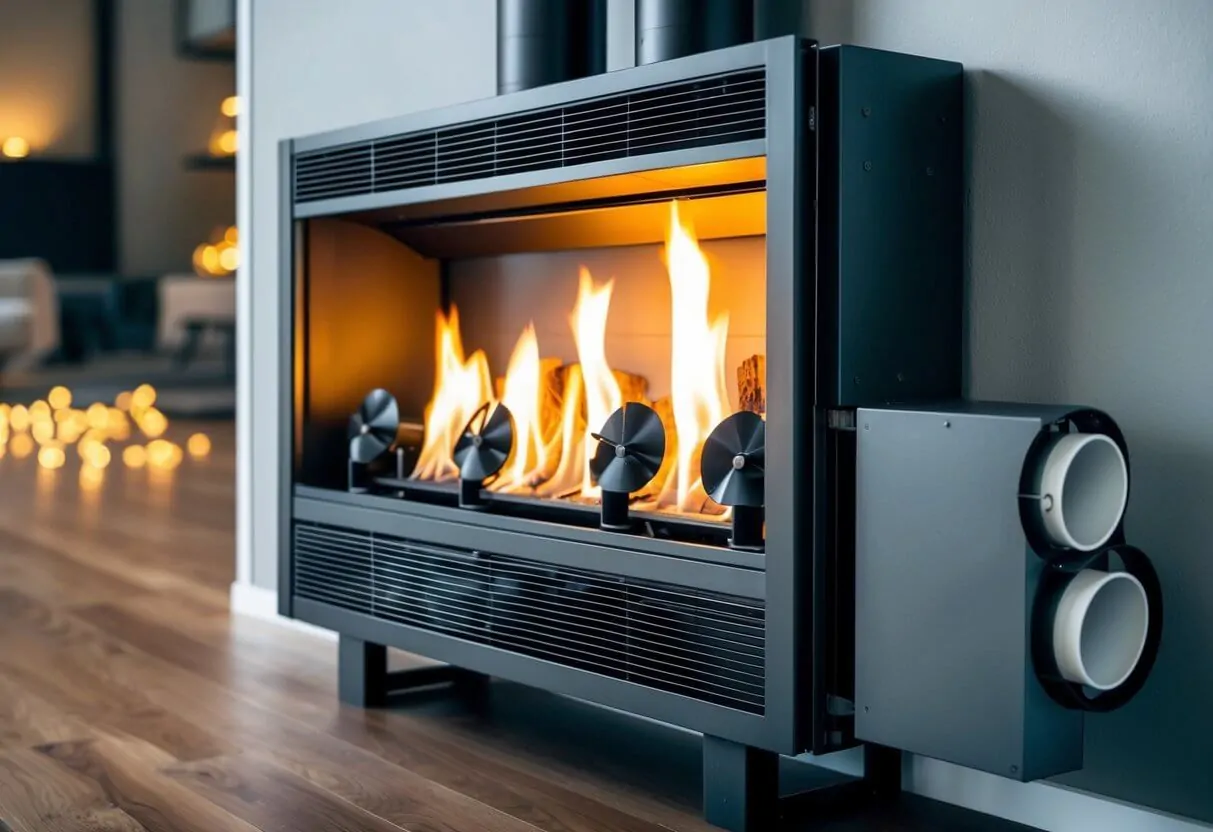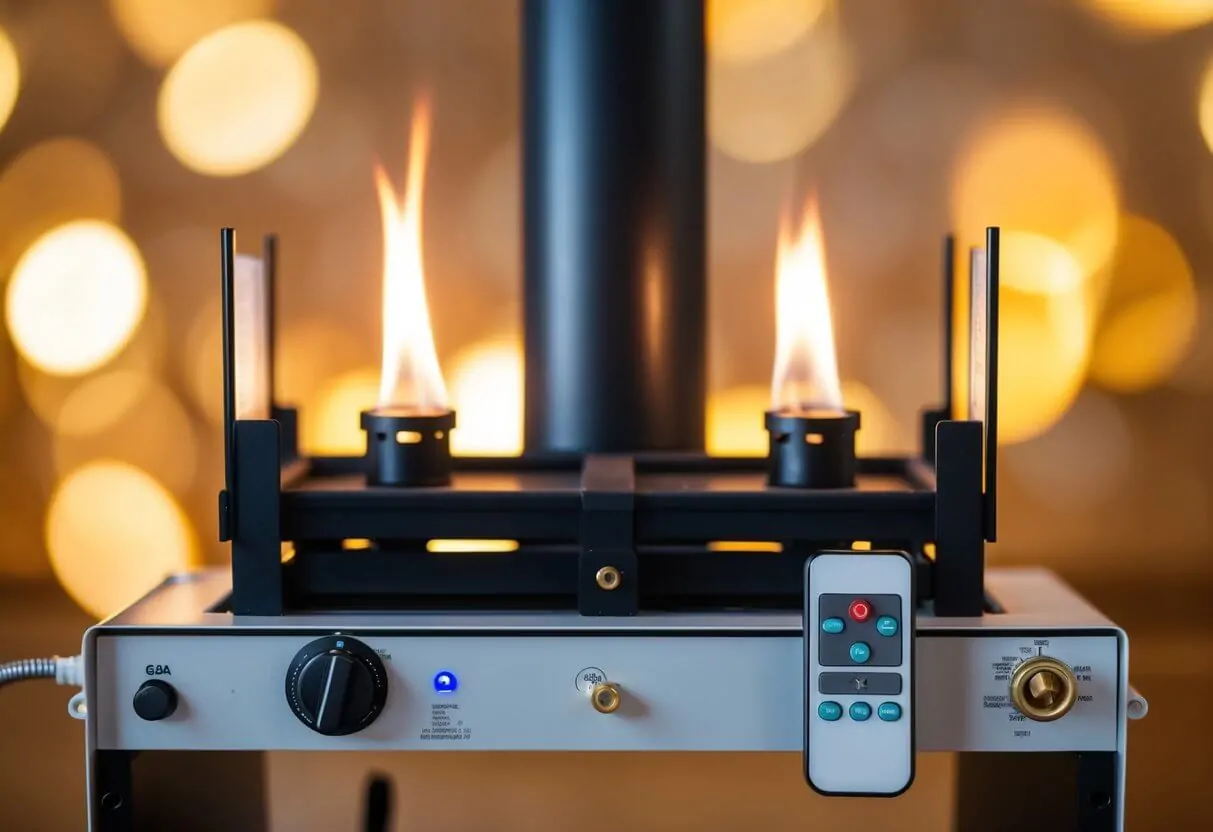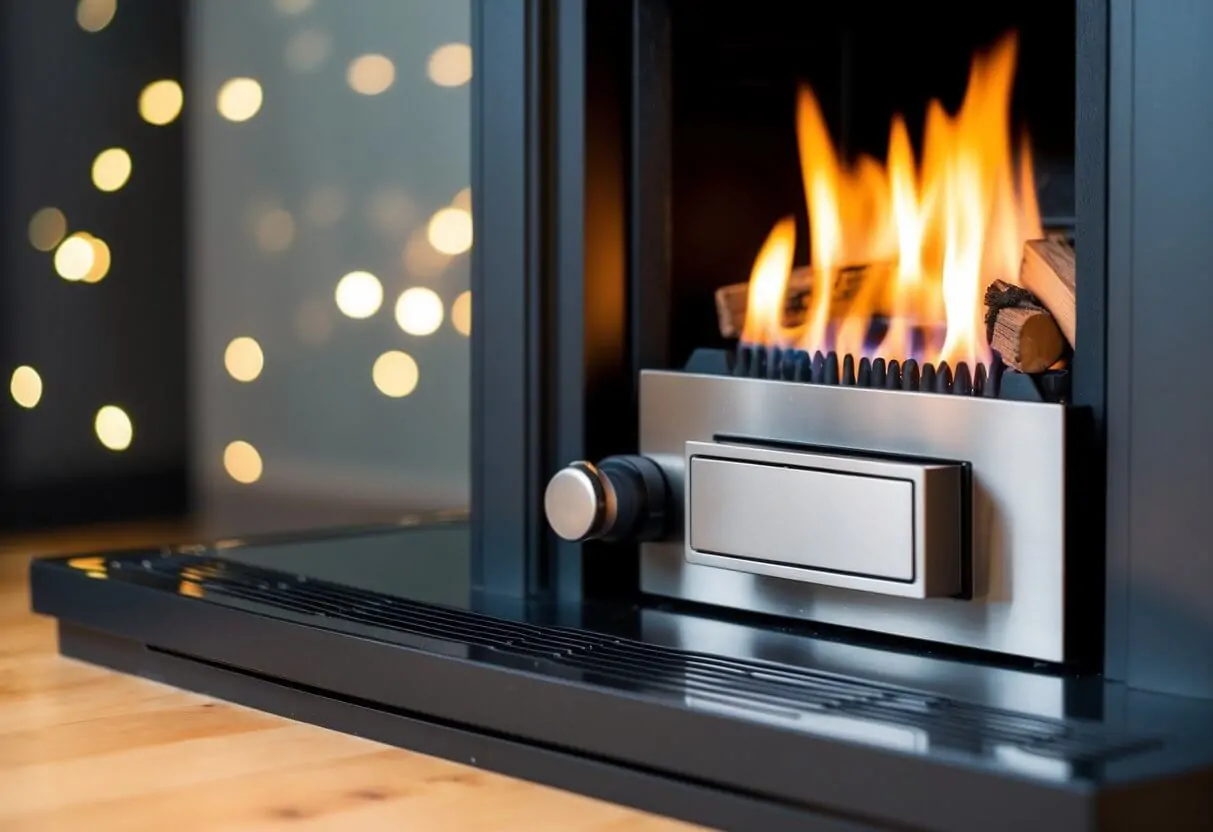What Are the Key Components of a Gas Fireplace: Essential Elements for Efficient Heating
Gas fireplaces have become increasingly popular in modern homes, offering a convenient and efficient way to add warmth and ambiance. These appliances consist of several key components that work together to create a safe and enjoyable fire experience. Understanding these parts is crucial for proper maintenance and operation of a gas fireplace.
From the firebox to the venting system, each element plays a vital role in the functionality of a gas fireplace. Homeowners considering installation or those who already have one can benefit from familiarizing themselves with these components. This knowledge aids in troubleshooting, maintenance, and ensuring optimal performance of the fireplace.
Key Takeaways
- Gas fireplaces consist of multiple components that work together for safe operation
- Understanding these parts is essential for proper maintenance and troubleshooting
- Familiarity with gas fireplace components helps ensure optimal performance and longevity
Gas Fireplace Chamber
The gas fireplace chamber serves as the central housing for all essential components required to generate a gas flame. Constructed from durable materials like steel or cast iron, this protective enclosure safeguards the surrounding area from heat and combustion.
Key elements within the chamber include:
- Burner assembly
- Gas supply connections
- Ignition system
- Safety devices (e.g. thermocouple)
The chamber’s design ensures efficient fuel combustion while maintaining a safe operating environment.
Fireplace Enclosures
Fireplace enclosures serve a crucial role in both safety and aesthetics. These protective barriers seal the area surrounding the hearth and firebox, preventing heat from escaping into the room. They shield occupants from intense warmth while containing combustible materials within the fireplace.
Enclosures come in various styles:
- Glass doors
- Decorative screens
- Metal meshes
These elements not only enhance safety but also contribute to the overall design of the fireplace, complementing the surrounding decor.
Circulation and Exhaust Management
Gas fireplaces rely on effective systems to manage heat distribution and exhaust. Venting plays a crucial role in directing harmful gases away from living spaces. Most units employ direct or power vents for this purpose. Some high-efficiency models operate without traditional vents, instead using advanced combustion techniques to limit heat output.
Blowers are essential components that enhance a fireplace’s performance. These devices circulate warm air throughout the room, maximizing comfort and efficiency. By promoting airflow, blowers also help prevent excessive heat loss through the venting system.
- Common vent types:
- Direct vent
- Power vent
- Ventless (high-efficiency models)
Proper ventilation and air circulation ensure safe operation and optimal heat distribution in gas fireplaces.
Fireplace Control Systems
Gas fireplaces employ sophisticated control systems to manage temperature, gas flow, and ignition. These systems typically include a control panel or remote device that allows users to adjust settings and monitor performance. Many modern units feature digital controls and remote operation, enhancing convenience and precision.
Key components of control systems often include:
- Thermostat
- Gas valve
- Ignition system (IPI or standing pilot)
- Shut-off valve for safety
Regular maintenance of control systems is crucial for optimal performance and safety. Annual inspections by qualified technicians can identify potential issues before they become serious problems.
Control panels may also monitor gas emission levels, providing important safety information. If a malfunction occurs, it’s essential to cease fireplace use immediately and contact a professional for repairs.
Accessories like decorative ceramic logs or alternative media can be controlled through these systems, allowing users to customize their fireplace’s appearance and heat output.
Gas Fireplace Components: Common Questions
Key Elements of a Gas Fireplace Insert
A gas fireplace insert typically includes a firebox, burner system, and ignition mechanism. The firebox houses the flame, while the burner distributes gas. An ignition system, either electronic or standing pilot, starts the fire. Decorative elements like faux logs or glass beads enhance aesthetics.
Gas Fireplace Ventilation Systems
Gas fireplaces use different venting methods:
- Direct vent: Uses a dual-pipe system for intake and exhaust
- B-vent: Draws indoor air and vents outdoors
- Vent-free: Requires no external venting
Each system has specific safety and efficiency considerations.
Understanding Gas Fireplace Diagrams
A typical gas fireplace diagram illustrates:
- Gas valve
- Burner assembly
- Pilot light
- Thermocouple
- Blower (if applicable)
- Glass front
- Flue collar (for vented models)
These components work together to create a controlled, efficient flame.
Popular Gas Fireplace Parts and Add-ons
Common parts and accessories include:
- Remote controls
- Thermostats
- Decorative screens
- Heat-resistant glass doors
- Blower fans
- Ember bed material
These elements enhance functionality and aesthetics.
Identifying Gas Fireplace Components
To identify parts:
- Consult the manufacturer’s manual
- Look for labels on components
- Compare to online diagrams
- Seek professional assistance if unsure
Safety is paramount when inspecting gas fireplace parts.
Essential Items for Gas Fireplace Installation
A gas fireplace installation requires:
- Gas line and fittings
- Venting materials (if applicable)
- Framing materials
- Electrical connections (for electronic ignition)
- Hearth and surround materials
- Safety barriers
- Local permits and inspections
Professional installation is recommended for safety and compliance.

